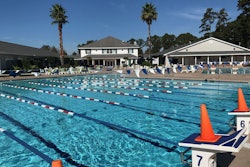SOURCE: National Athletic Trainers' Association (NATA)
DALLAS, TX – The Journal of Athletic Training, the National Athletic Trainers’ Association’s (NATA) scientific publication, released today Early Single Sport Specialization in a High-Achieving U.S. Athlete Population: Comparing National Collegiate Athletic Association Student-Athletes and Undergraduate Students in their special thematic issue focused on youth sport specialization.
The study compared Division I student athletes (SA) and noncollegiate athletes (NA) who had competed in youth sports. The study found that parents and siblings of Division I student athletes (SA) were more likely to have been high-achieving athletes, while other factors previously thought to be imperative, such as the age of single sport specialization and birth month, were not significantly different. This suggests that genetic endowment, family and/or environmental dynamics play a large role in athletic development, beyond that of deliberate practice alone.
“The ‘deliberate practice model’ implies that the accumulation of a large volume of sport specific training exclusively will lead to long term success. It has been a driving force for single sport specialization at an early age. However, it doesn’t take into account key elements such as genetics, family and social support structures,” said John P. DiFiori, MD, FACSM, FAMSSM, lead author, director of sports medicine for the National Basketball Association and chief of Primary Sports Medicine for the Hospital for Special Surgery (NY).
Key Stats
- The SAs specialized in a single sport at an older age (15.38 years old versus 14.30 years old).
- The parents of SAs were more likely to have participated in collegiate (32.4% versus 8.4%) and professional sports (10.9% versus 1.3%).
- Neither birth month nor the age of sport initiation differed between groups age of sport initiation (7.16 years old versus 7.71 years old)
- Both groups participated in multiple sports in childhood (SAs 3.9 sports, NAs 3.2 sports).
- 88% of the SAs in the study participated in more than one youth sport.
“This study supports others, which show that although sport-specific skill development is essential, it alone does not ensure high-level success. And while there is growing data that indicates that participating in multiple youth sports is important, this study is unique in that both groups participated in more than one sport. The finding that was clearly different was the level of sport achievement among family members,” he added.
The study consisted of 273 Division I SA and 155 NA that had been involved in competitive youth sports before entering the university. Overall, the results are not consistent with deliberate practice theory, which states that performance is directly related to and constrained by the accumulated amount of highly structured activity. This study points toward an alternative model that includes not only sport-specific skill development, but also genetic and social factors as key elements of long-term sport achievement.
For more information about youth sport specialization, visit atyourownrisk.org.
About NATA: National Athletic Trainers’ Association (NATA) – Health Care for Life & Sport
Athletic trainers are health care professionals who specialize in the prevention, diagnosis, treatment, and rehabilitation of injuries and sport-related illnesses. They prevent and treat chronic musculoskeletal injuries from sports, physical and occupational activity, and provide immediate care for acute injuries. Athletic trainers offer a continuum of care that is unparalleled in health care. The National Athletic Trainers' Association represents and supports 45,000 members of the athletic training profession. For more information, visit www.nata.org.





























